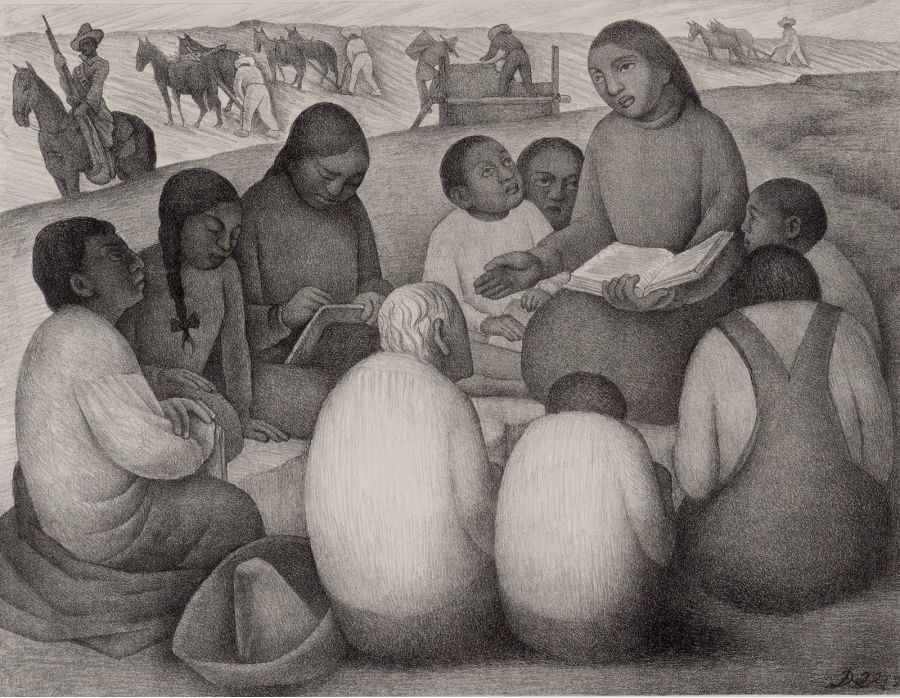b/w lithograph
1932
12 5/8 x 16 5/16 inches
signed in pencil. Provenance Weyhe Gallery
An iconic image of indigenous teacher by Mexican muralist. Farmers are working in background while armed men on horses
observe.
Impressions of this image can be found in Chicago Art Institute, Philadelphia Museum of Art, the Metropolitan Museum of Art, the McNay Art Museum, the Library of Congress and the Museum of Modern Art
During the 1920s Diego Rivera helped establish a nationalist painting style in Mexico that reflected the nation's indigenous forms and symbols as well as its renewed political vitality. Rivera received his formal training in Mexico City, where the seeds of his populist philosophy were planted. In 1907, he was awarded a scholarship to travel and study in Spain, France, and Italy. He returned to his home country some fourteen years later, and quickly became a leader of the muralism movement that flourished after the end of the Mexican Revolution. Like his colleagues, Rivera painted allegorical depictions of traditional indigenous culture and the dignity of the working class, as well as utopian visions of the future under socialism. Between 1930 and 1940, he painted murals in San Francisco, New York, and Detroit that focused on industry and social progress through technology. Rivera, a notorious womanizer, was married three times — most famously to the painter Frida Kahlo.



